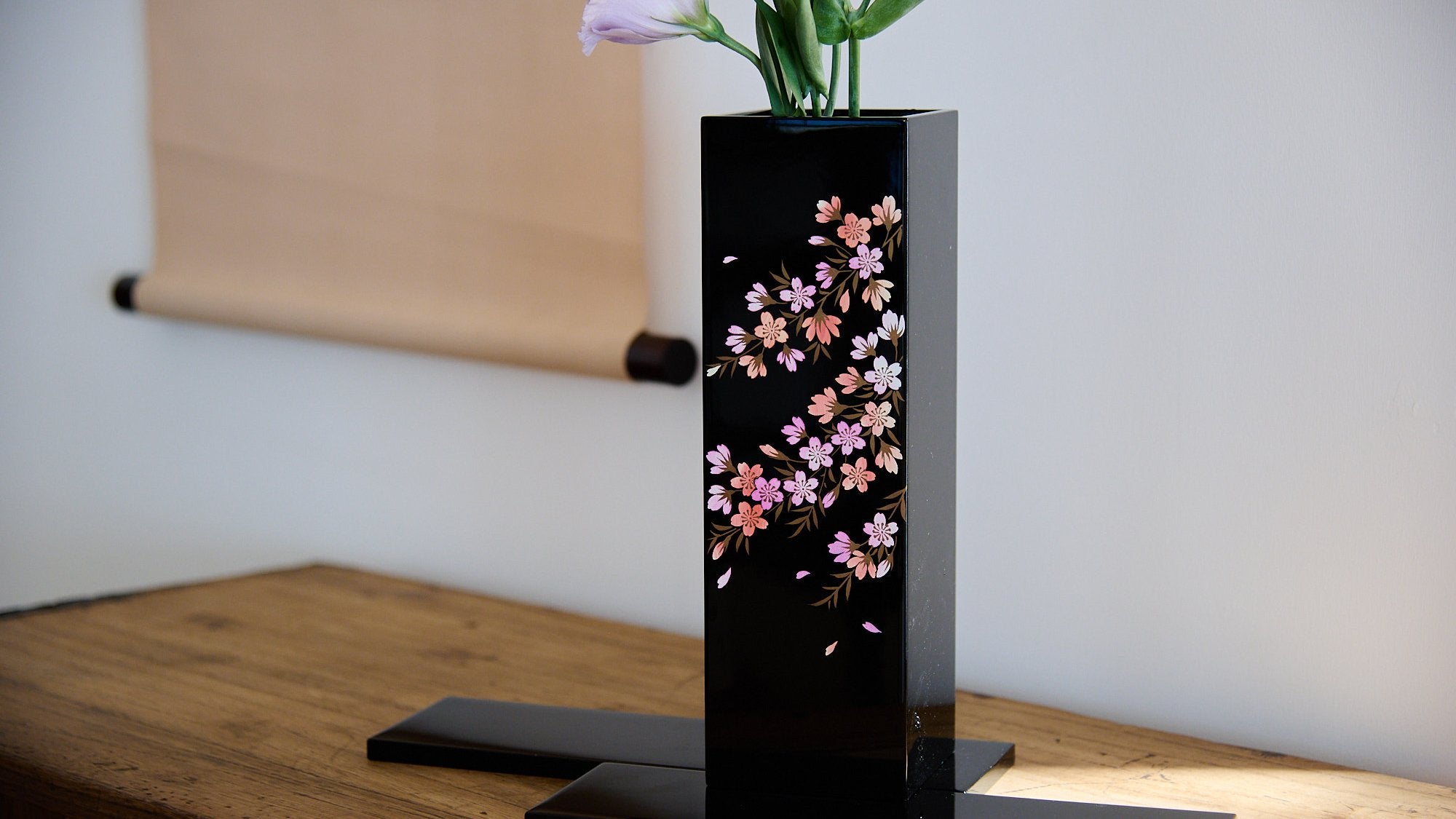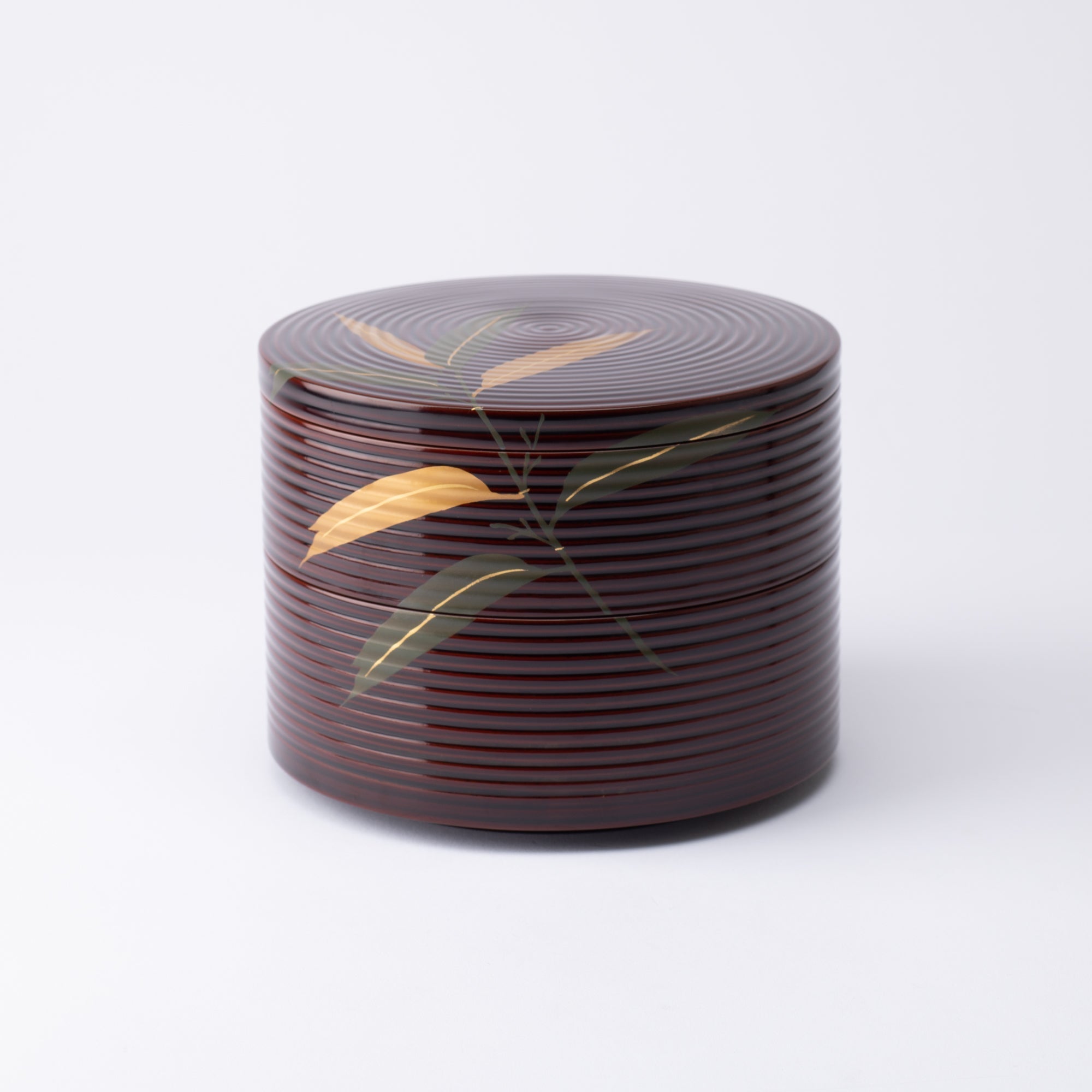
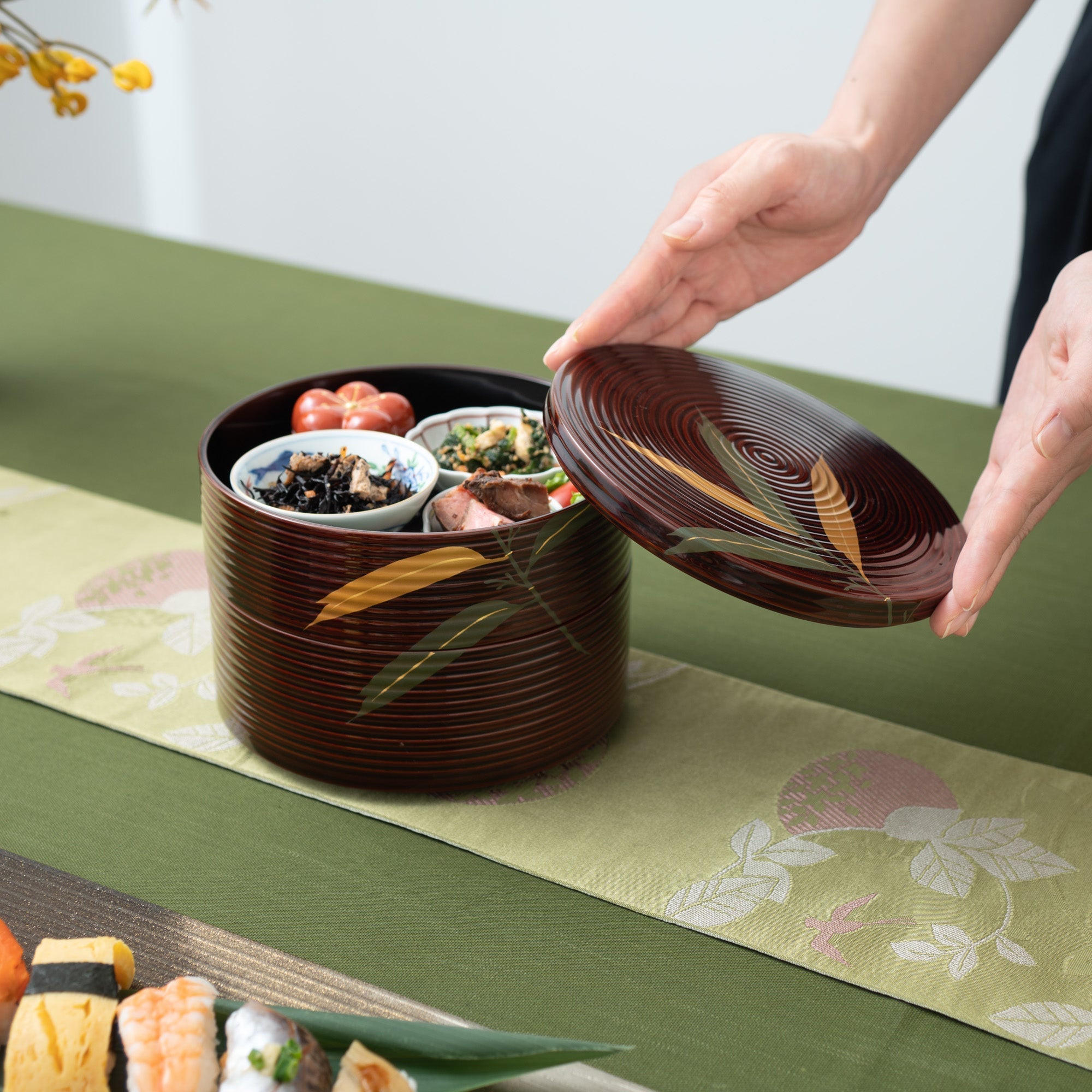
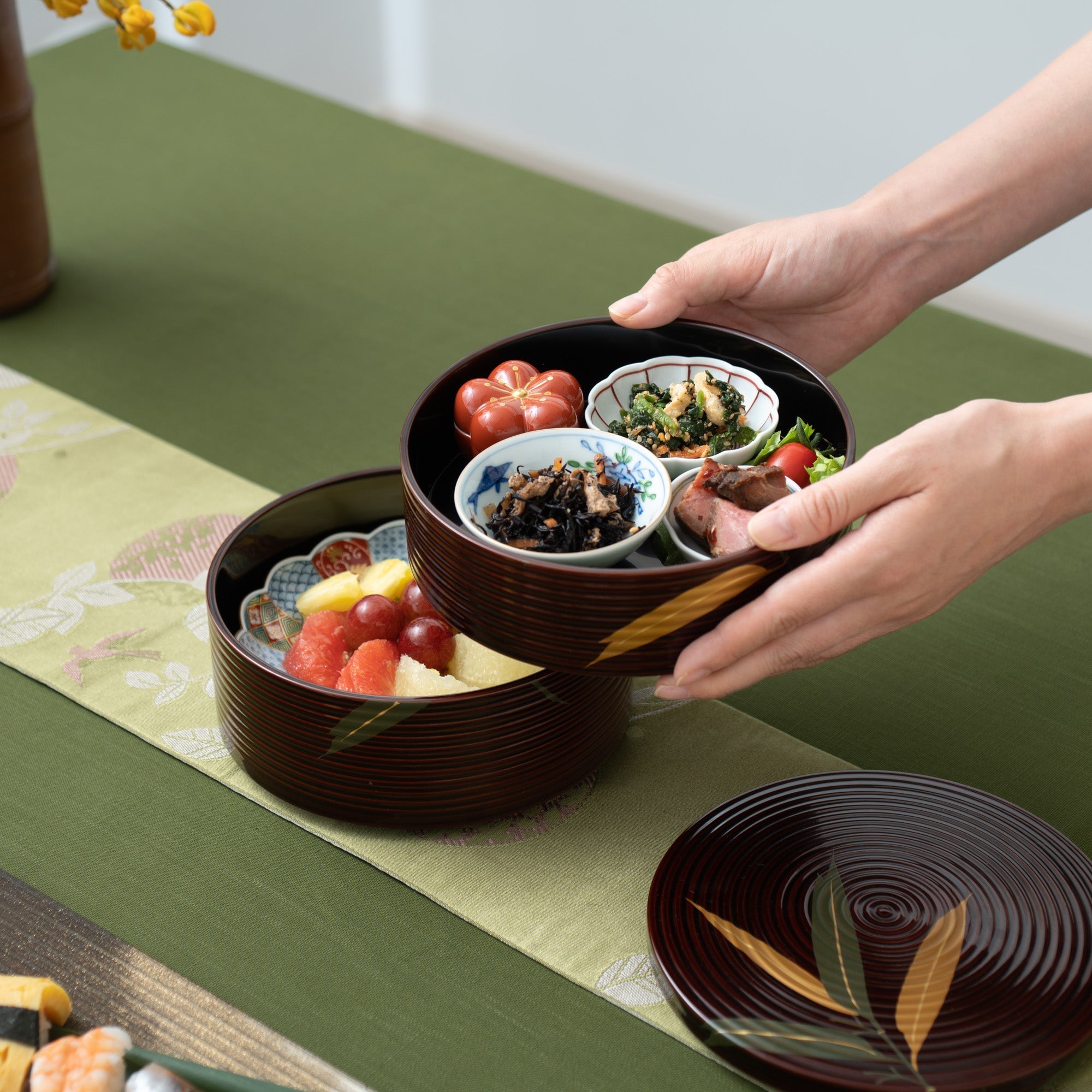
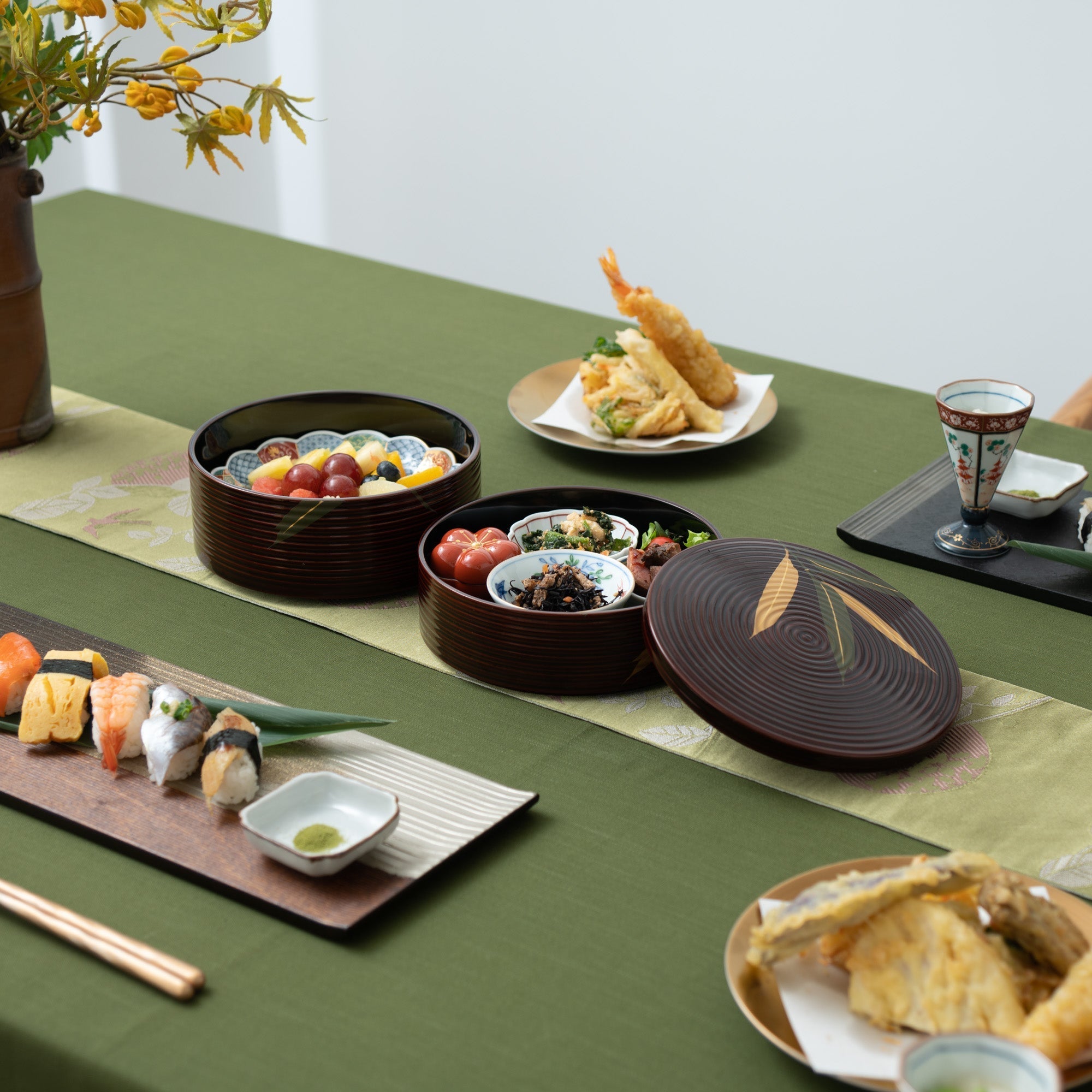
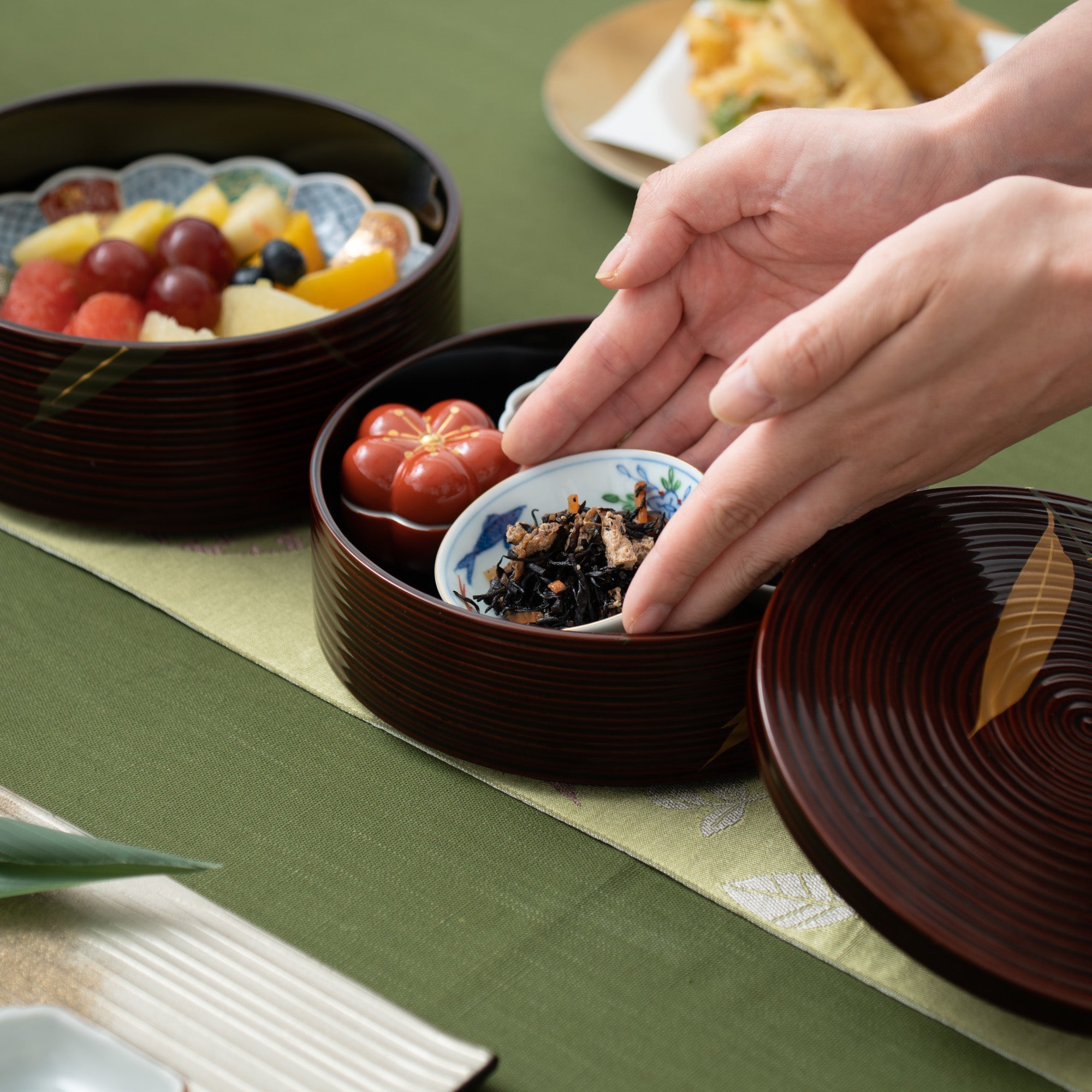
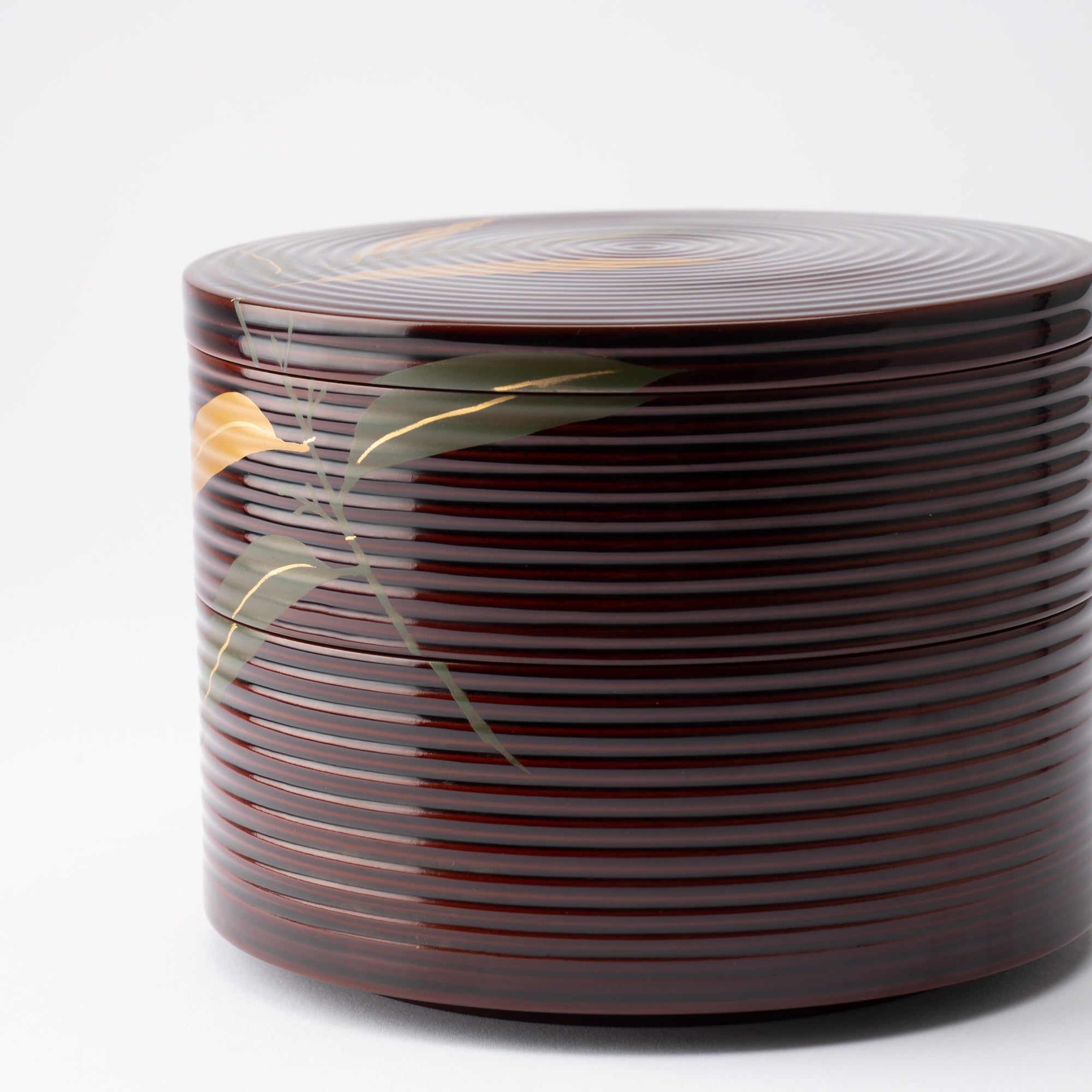
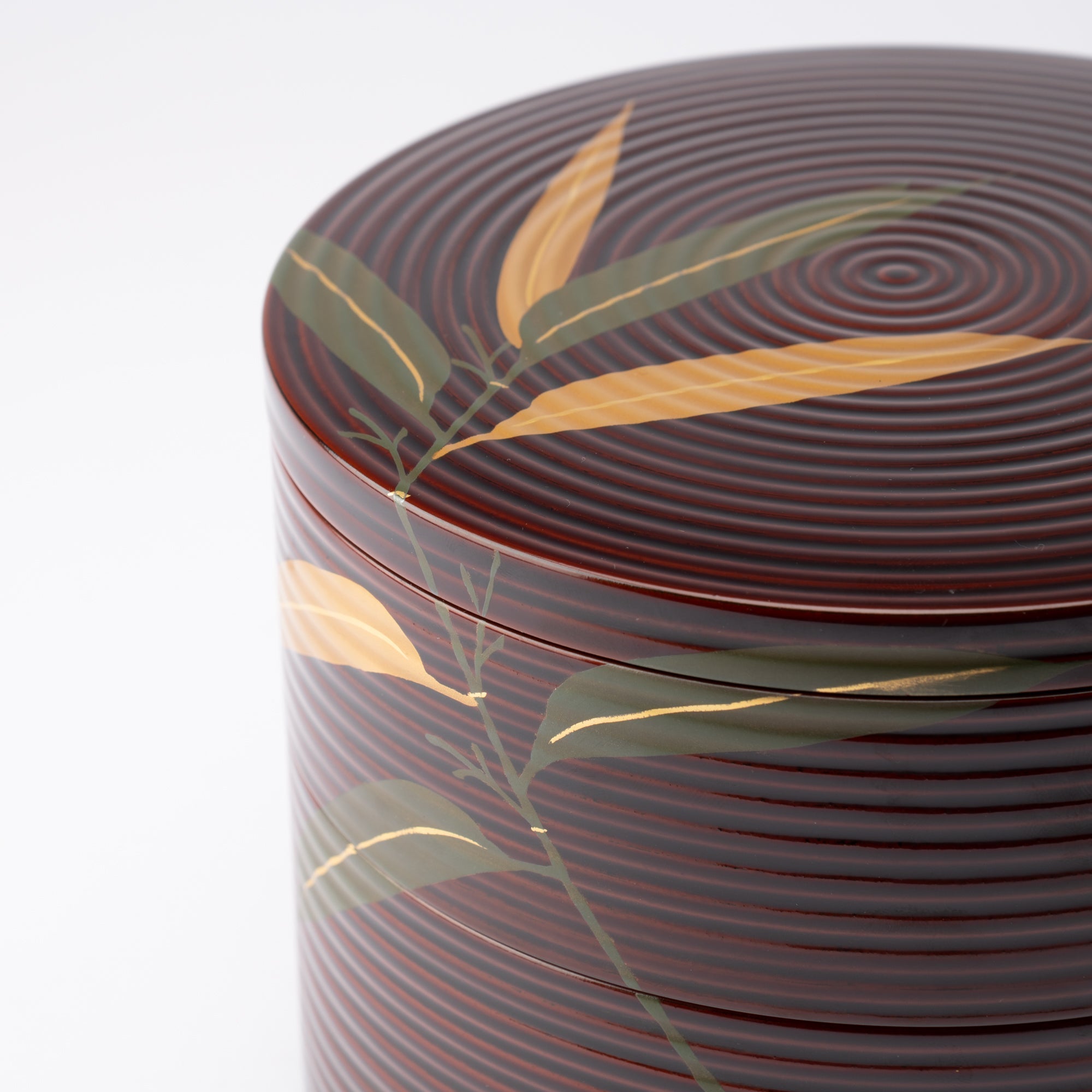
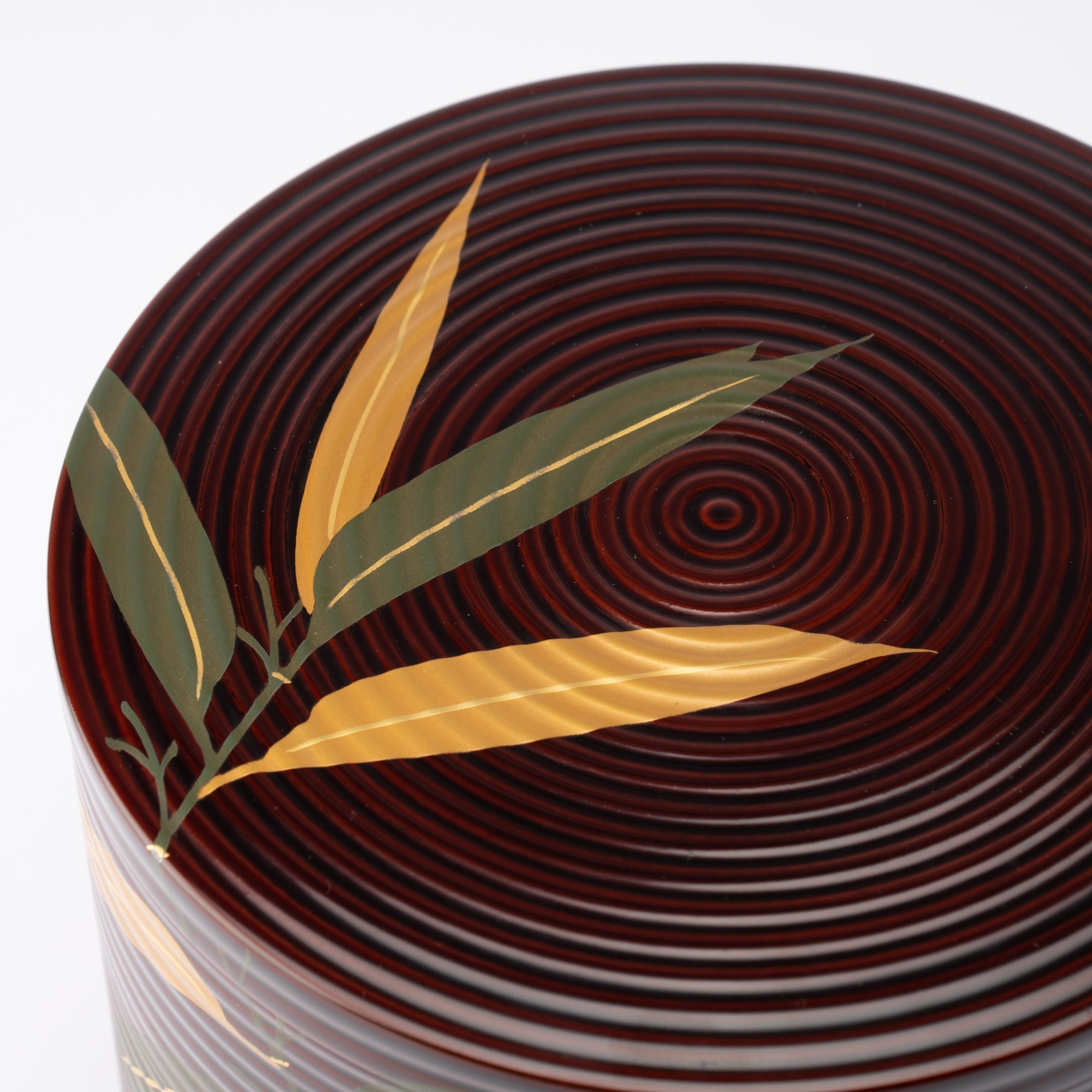
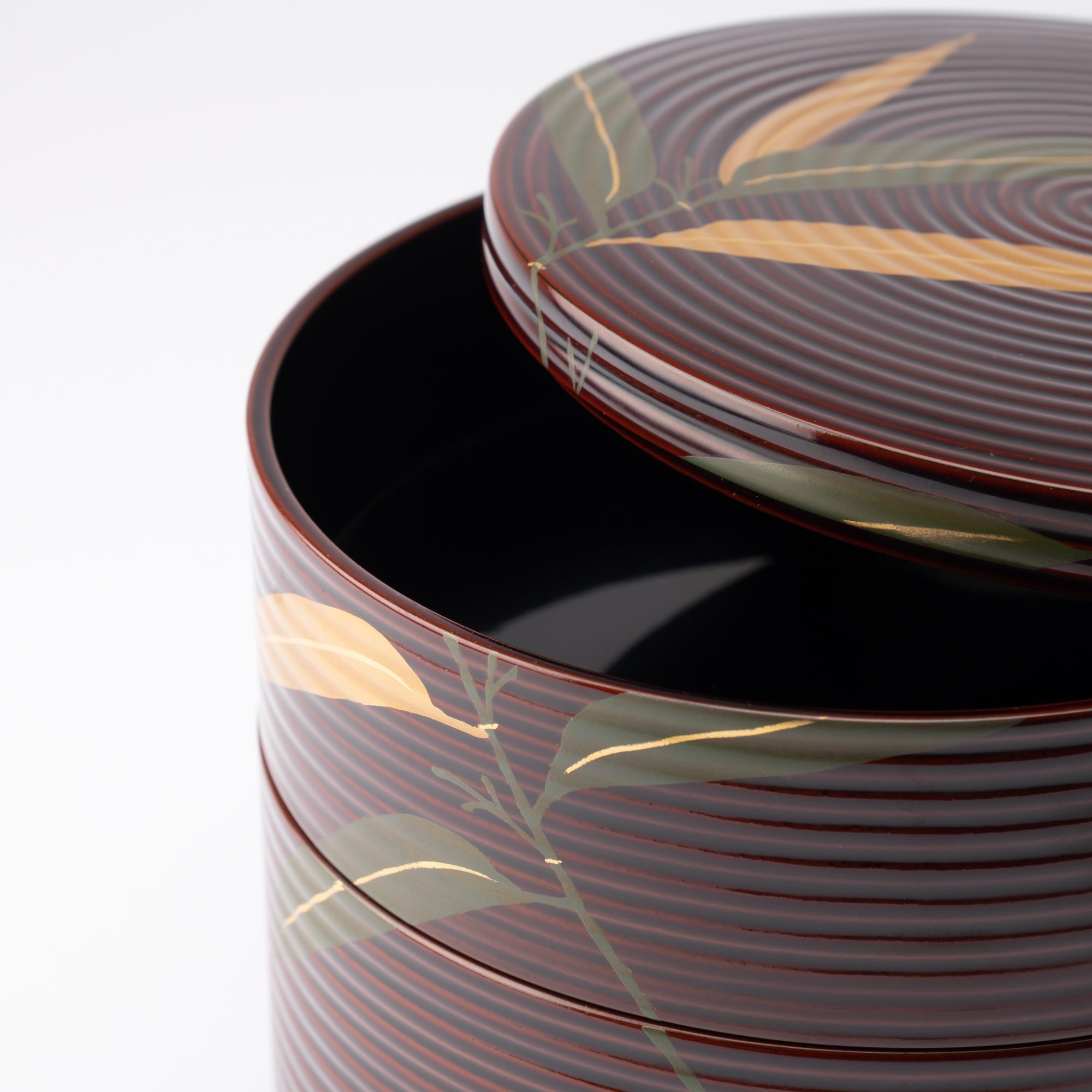
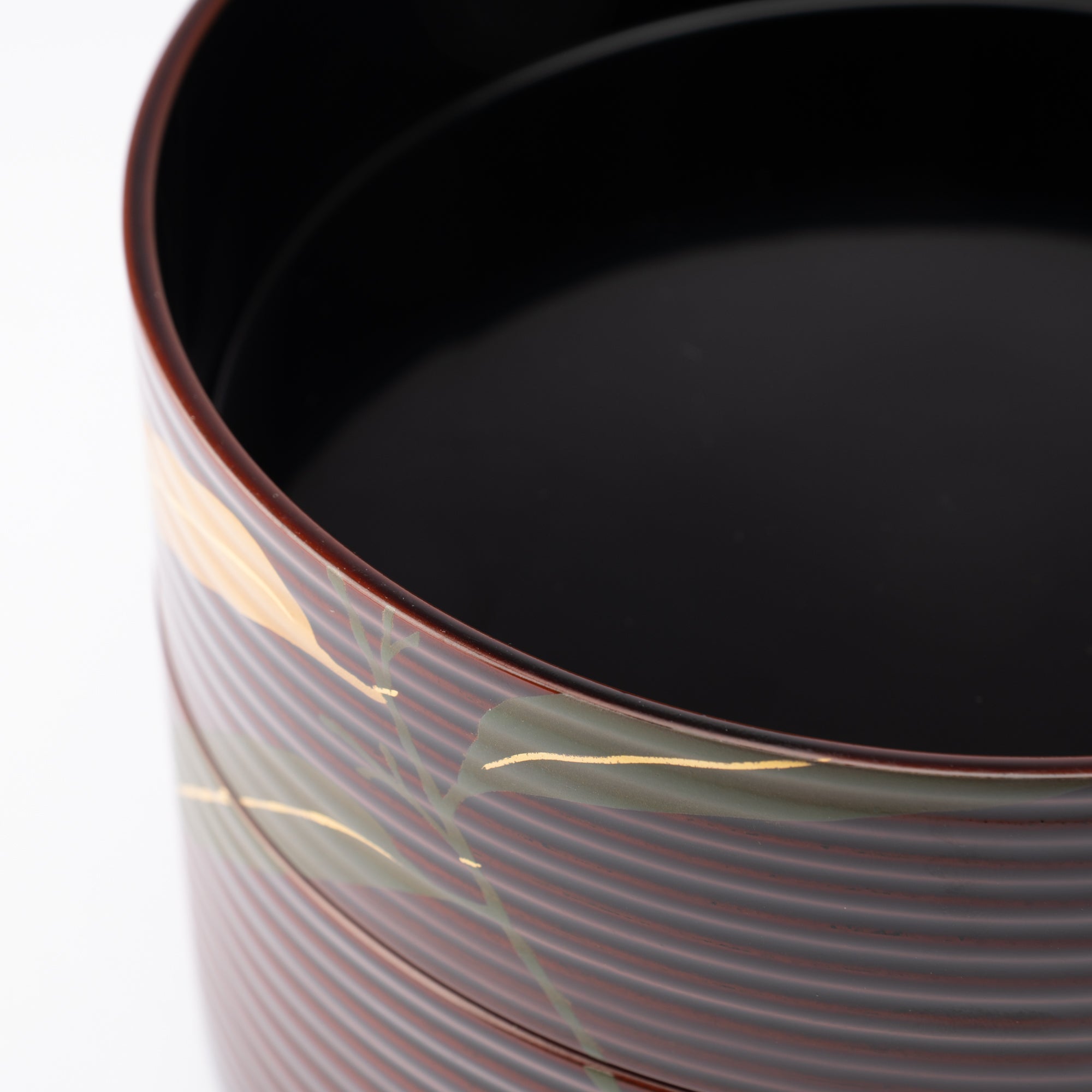
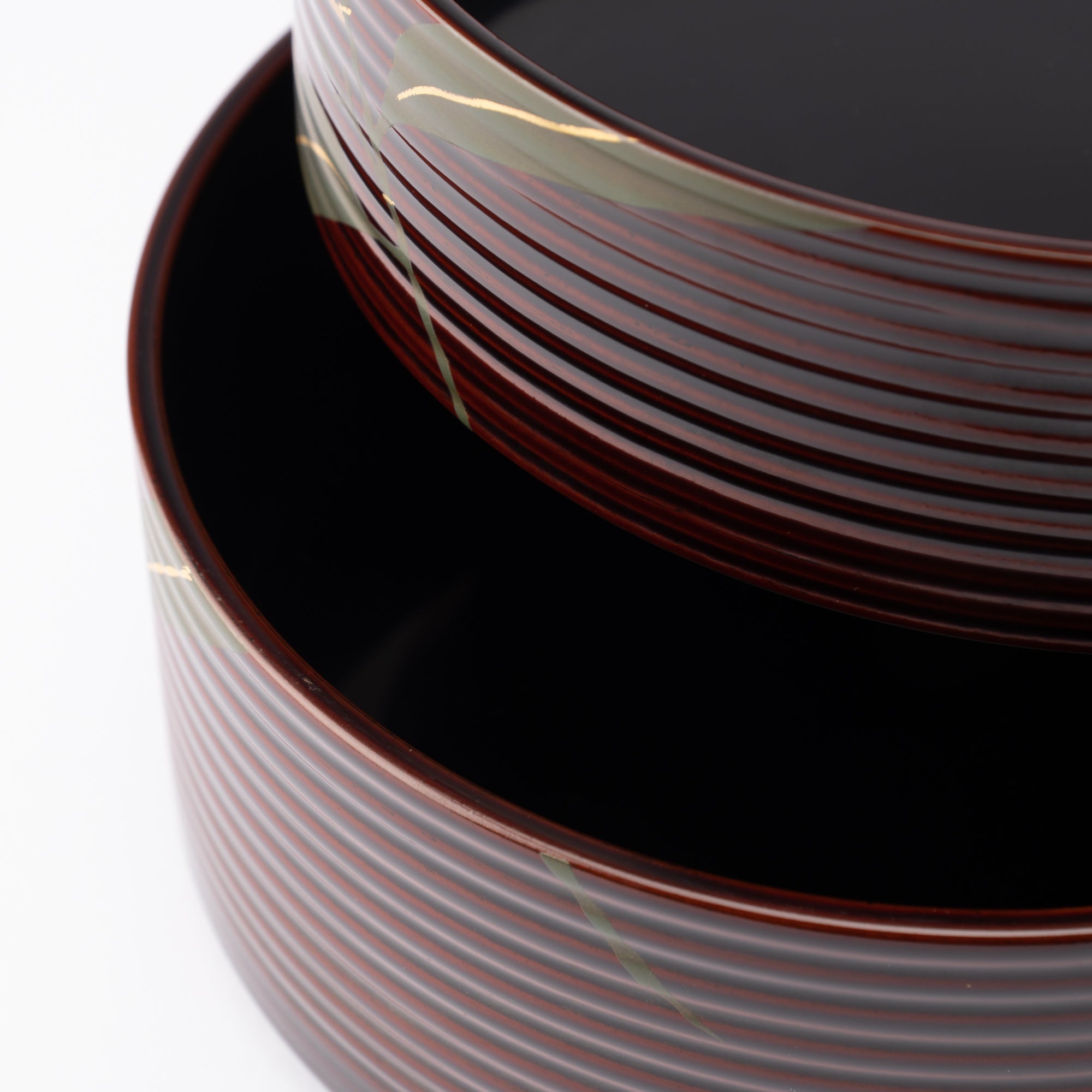
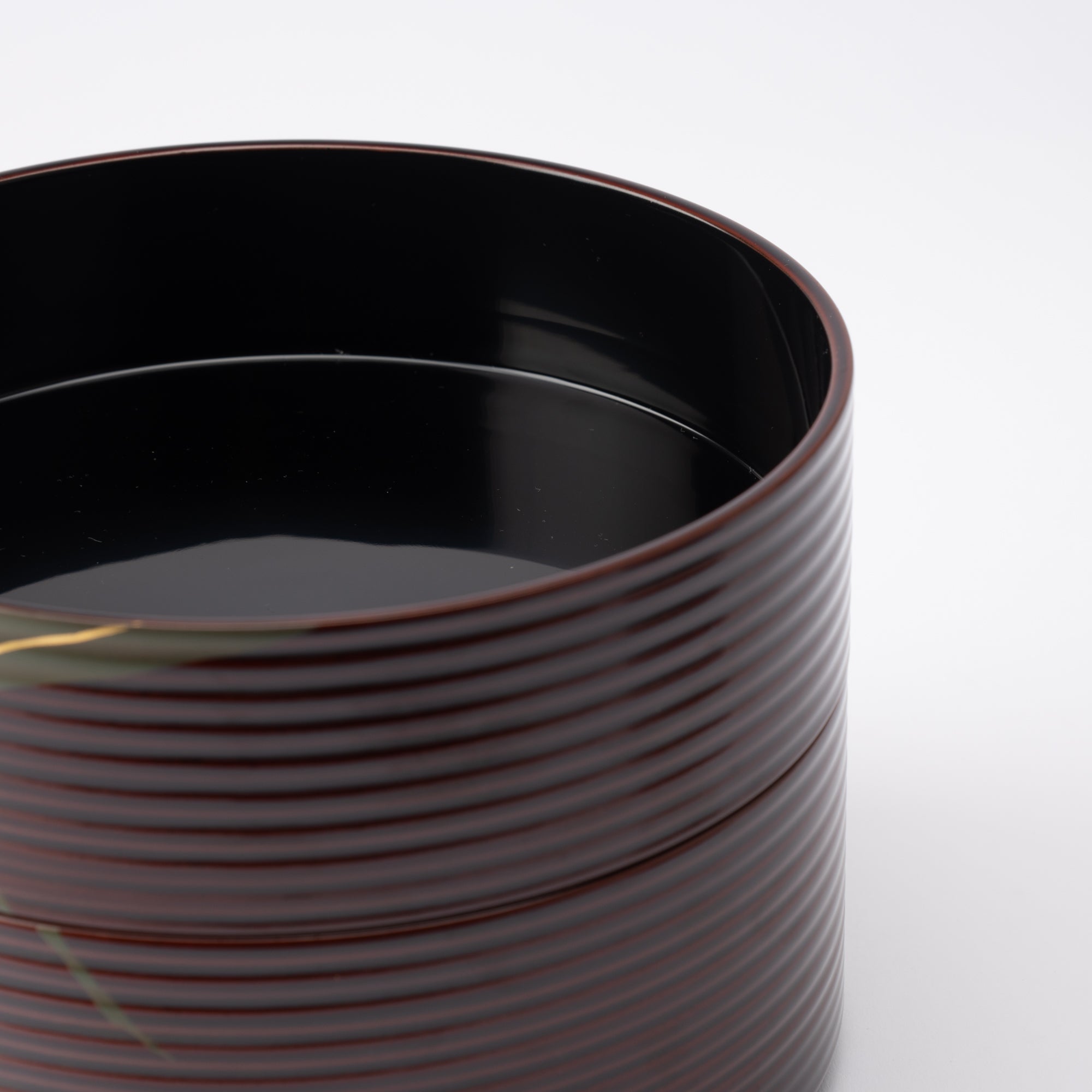
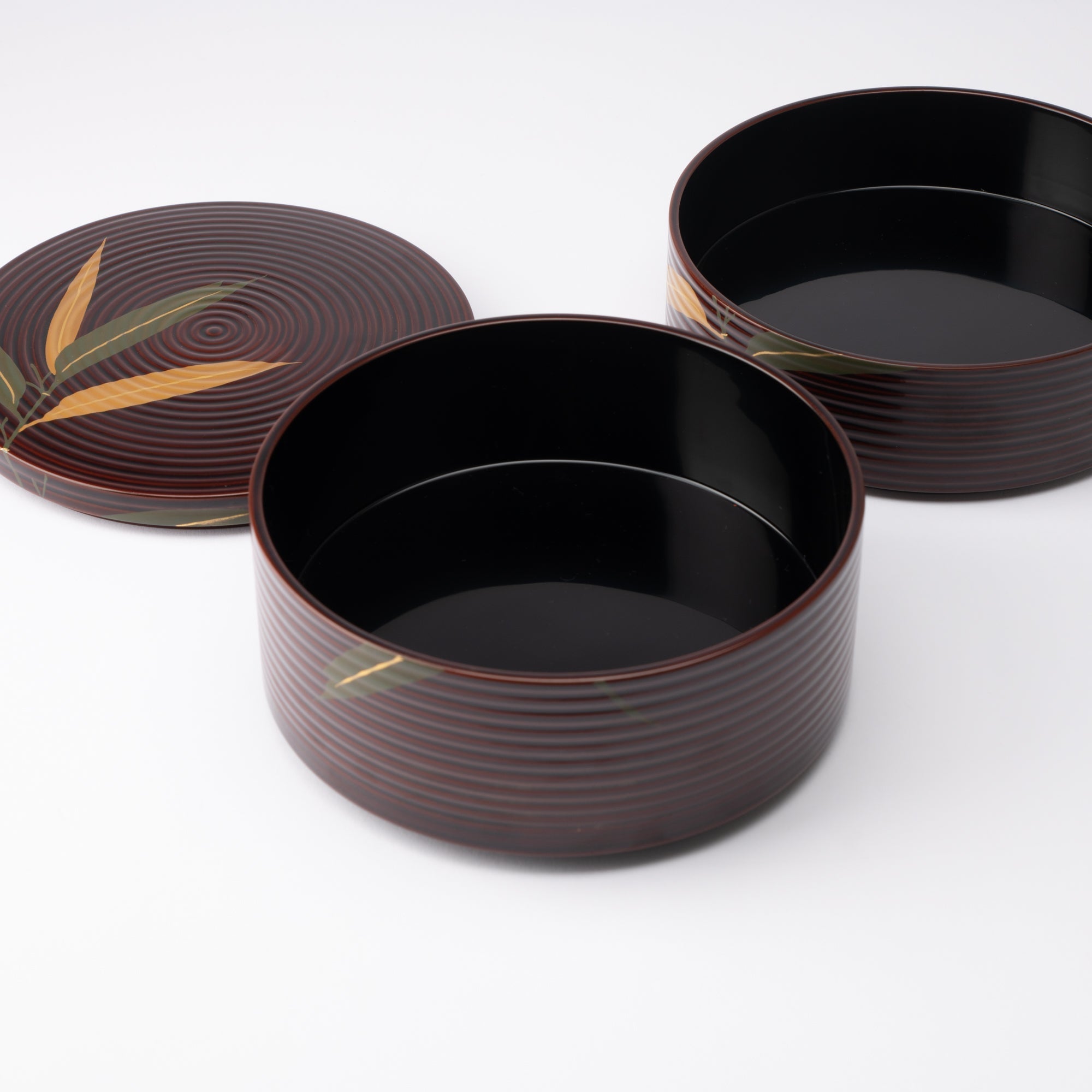
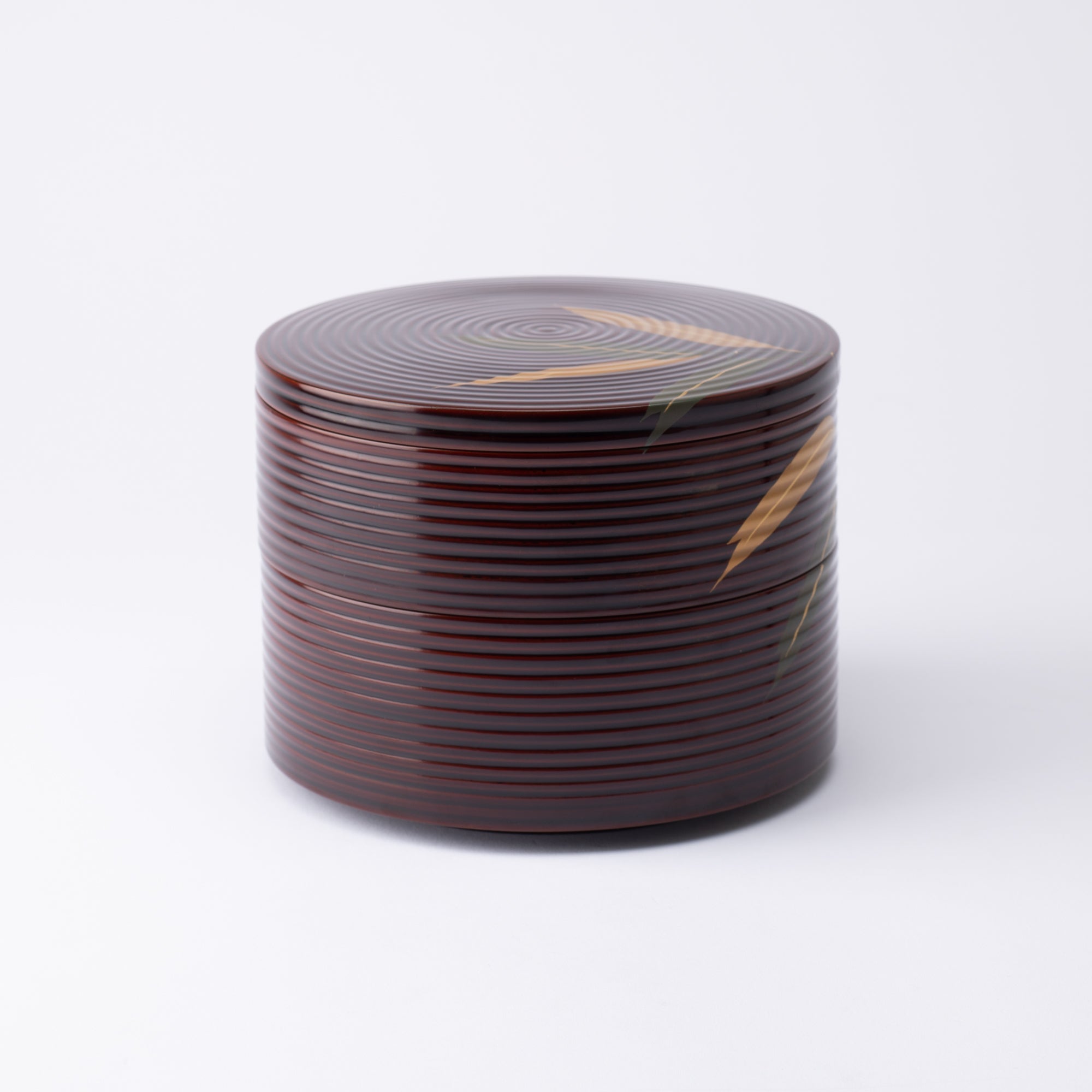
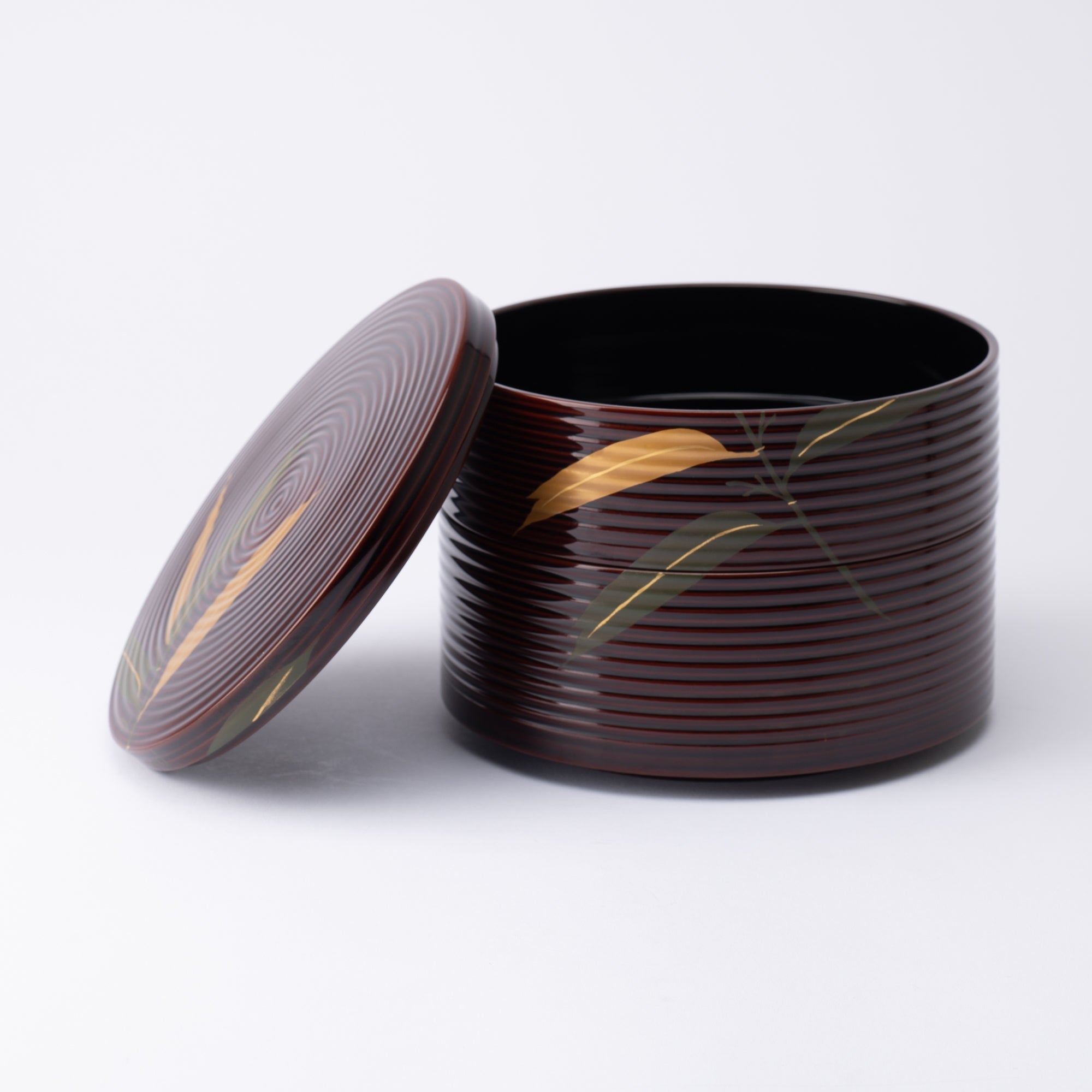
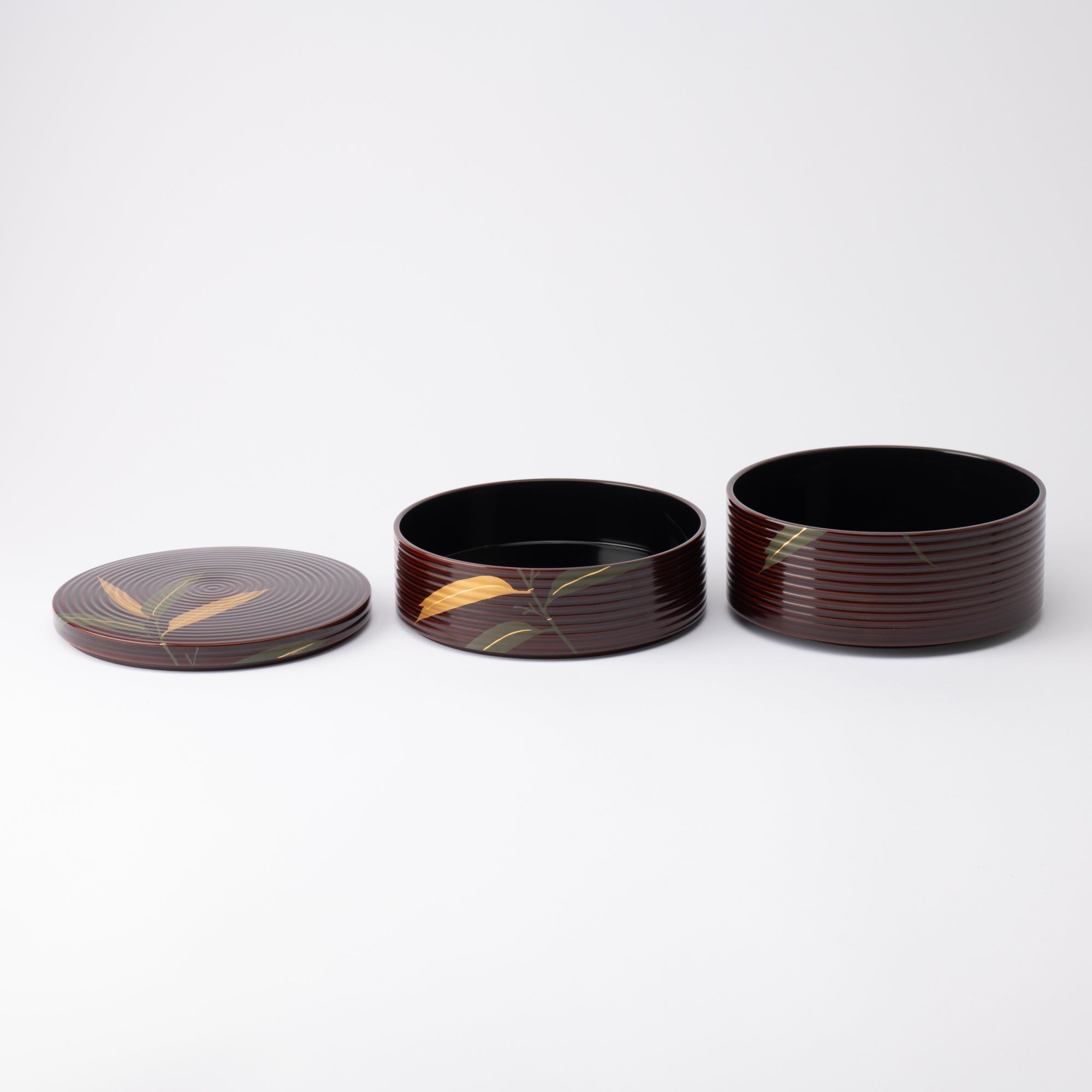
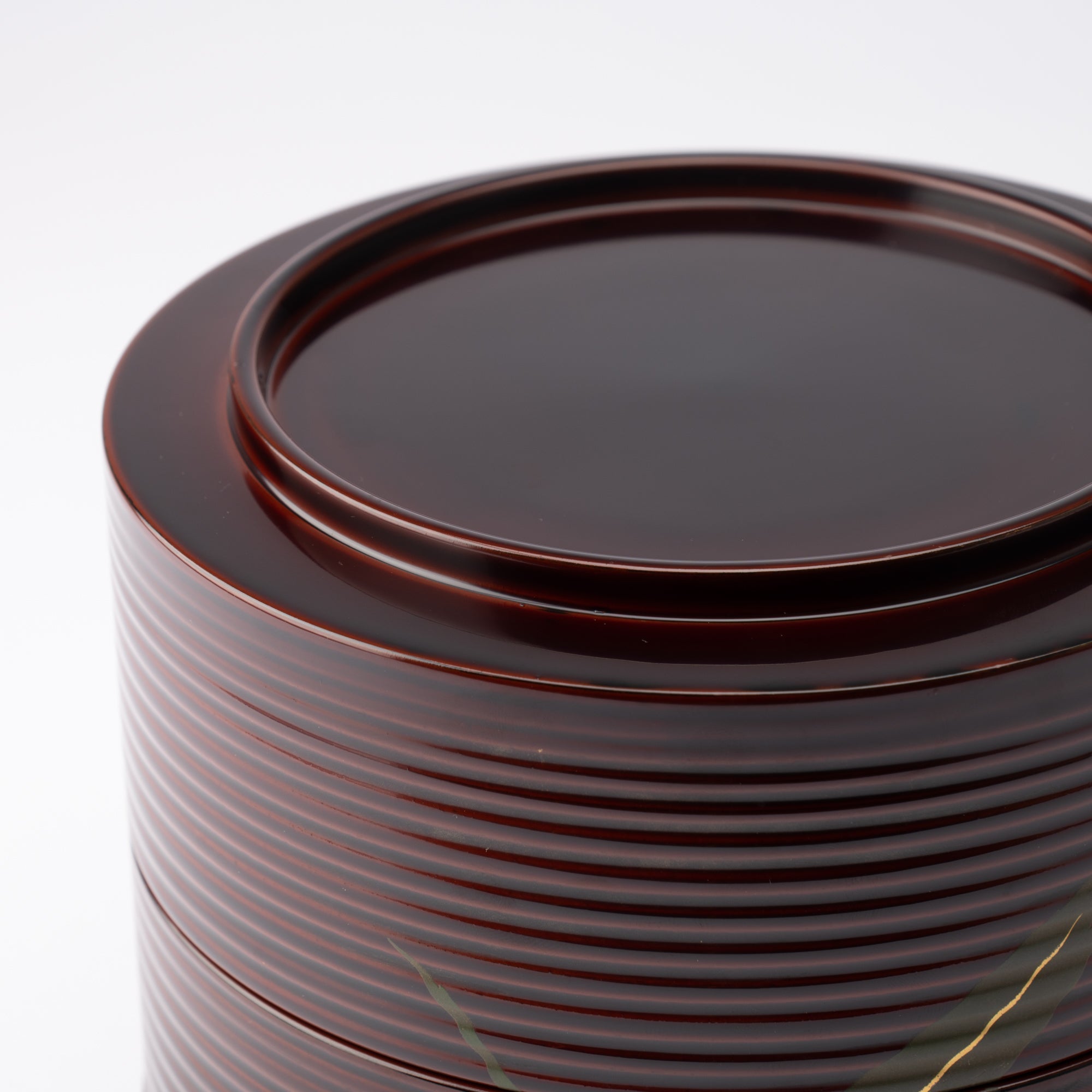
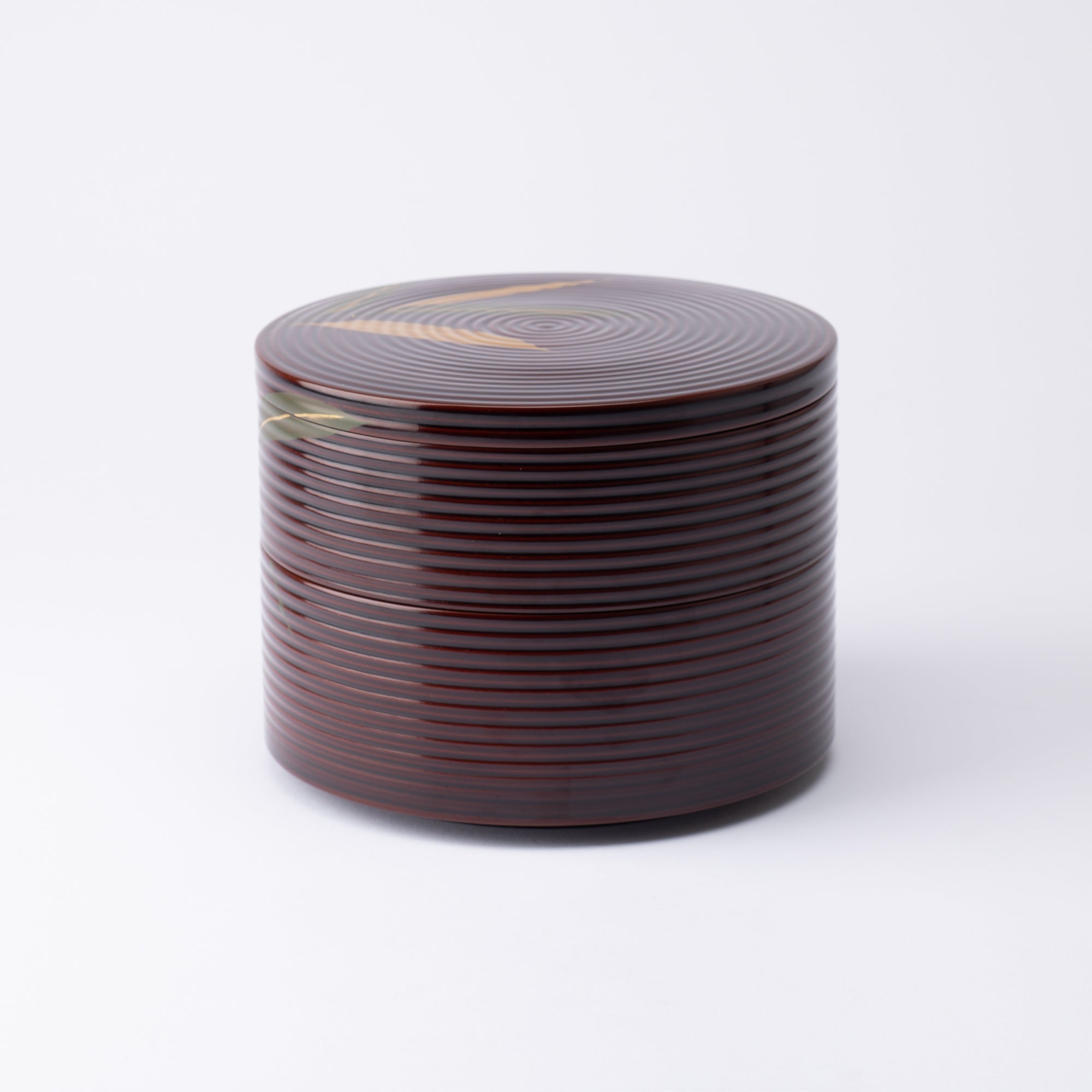
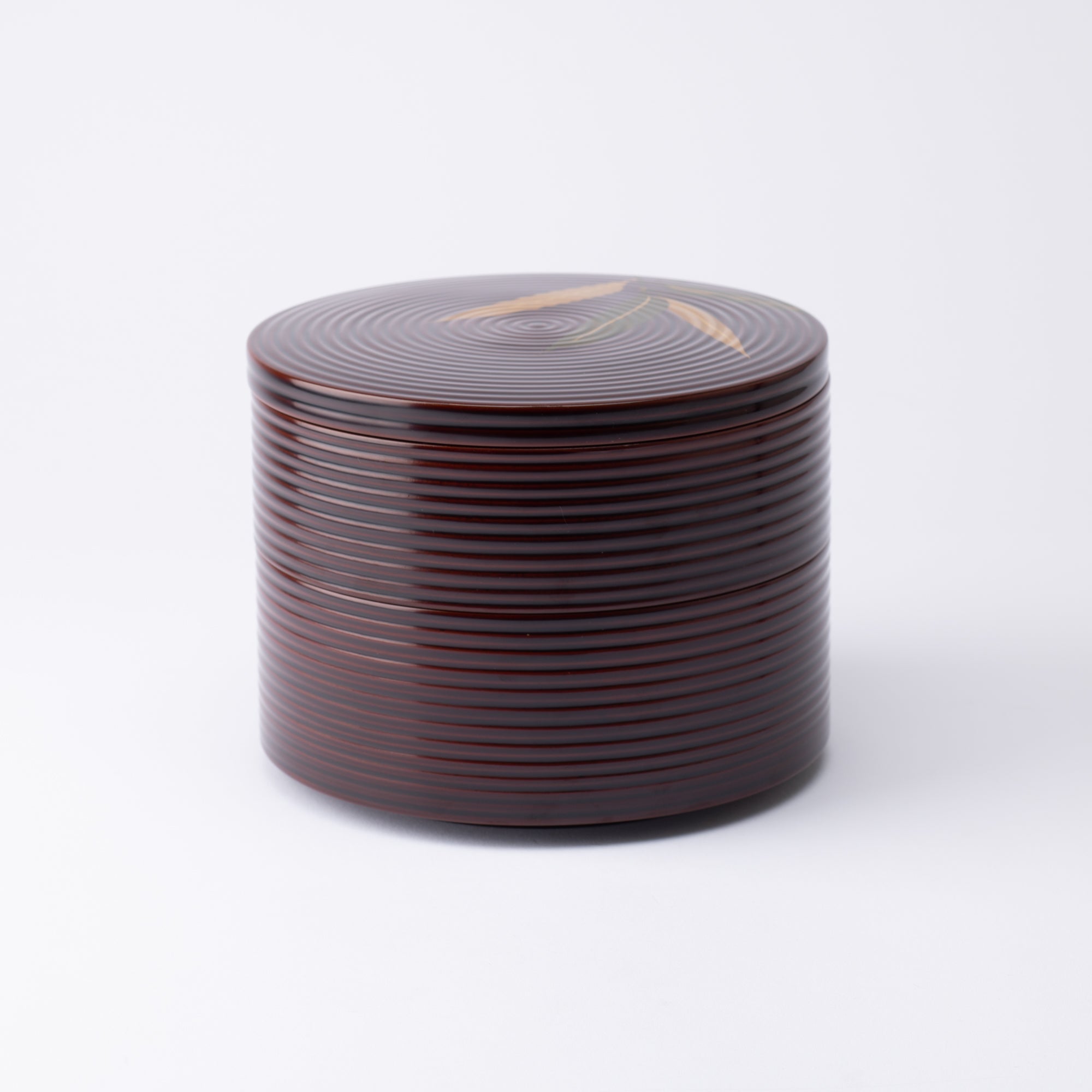
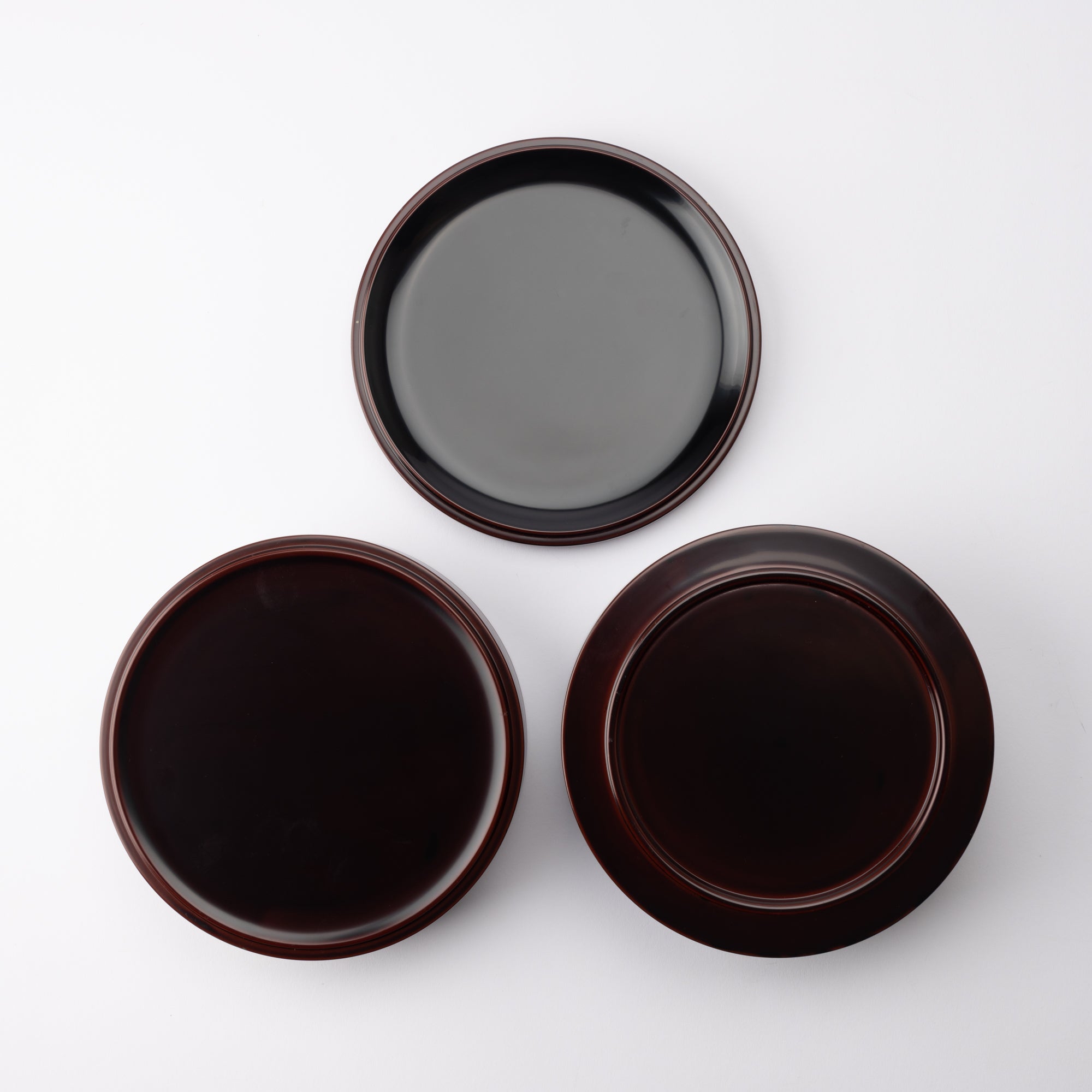
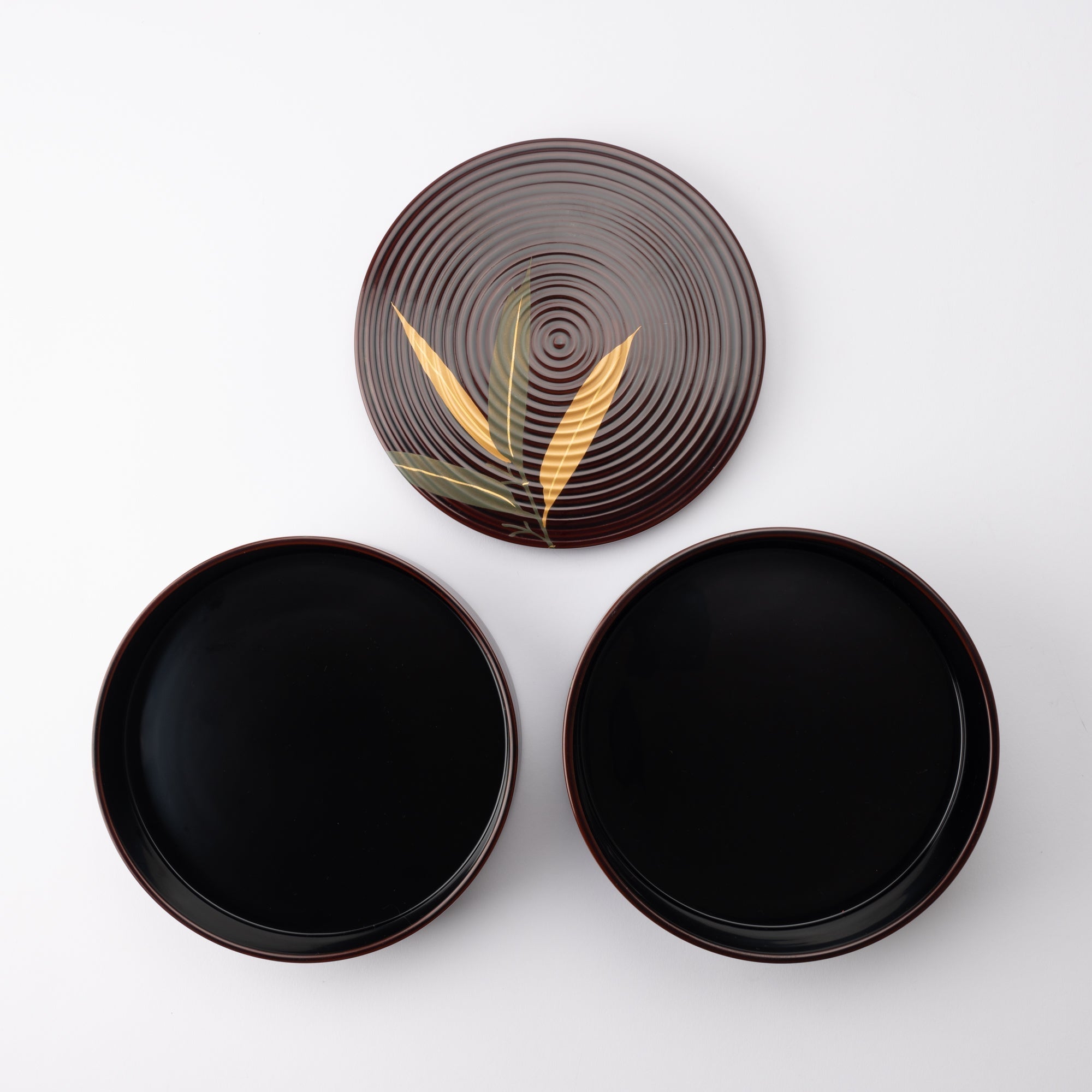
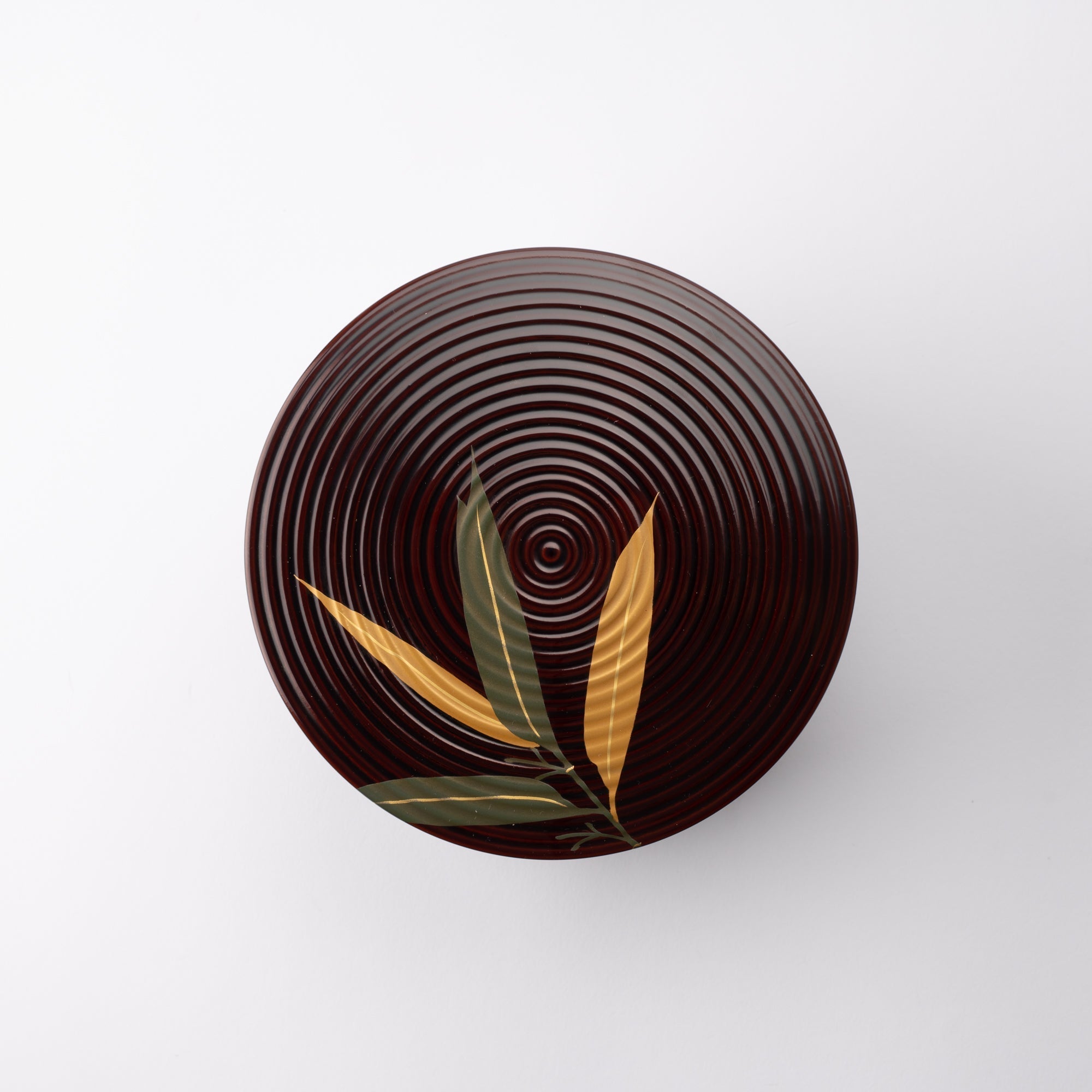
Bamboo Grass Maki-e Two Tiers Jubako Bento Box
Estimated Shipping Widget will be displayed here!
This two-tiered Jubako Bento box is decorated with "Maki-e" on bamboo grass and lacquered with "Tame-nuri". "Maki-e" is a lacquerware decoration technique in which design is drawn in lacquer, over which gold, silver, or other metal powder is sprinkled while the lacquer is wet.
"Tame-nuri" is a lacquerware technique in which a middle coat of lacquer is applied and then polished with a coat of tame-nuri lacquer, so that the more time passes, the more transparent and vivid the base color becomes.
The evenly spaced lines are a characteristic decoration of Yamanaka lacquerware. This decorative method is called "suji-biki," in which fine lines are made parallel to the surface of the wood by applying a blade to the wood while the lathe is turning.
This is just the right size for two people. It can also be used as a gorgeous container for sweets in everyday use.
DETAILS
| Quantity | 1 |
| Size |
[Whole set] D 17.4 cm (6.9 in) x H 12.3 cm (4.8 in) [Top tier] D 16.5 cm (6.5 in) x H 3.4 cm (1.3 in) [Bottom tier] D 16.4 cm (6.5 in) x H 5 cm (2 in) |
| Material |
Wood [Coating] Lacquer |
| Microwave | No |
| Dishwasher | No |
Crafts
Yamanaka lacquerware, also known as Yamanaka Shikki, is a kind of lacquerware produced in the Yamanaka Onsen district of Kaga, Ishikawa Prefecture. This lacquerware is unique in that it blends wood grain's natural elegance with the elegant maki-e technique of sprinkling gold, silver, or other colored powder onto a lacquer painting.
With its beautiful wood texture, delicate and robust Yamanaka lacquerware incorporates a modern sense of design while inheriting a tradition that has lasted for 400 years.
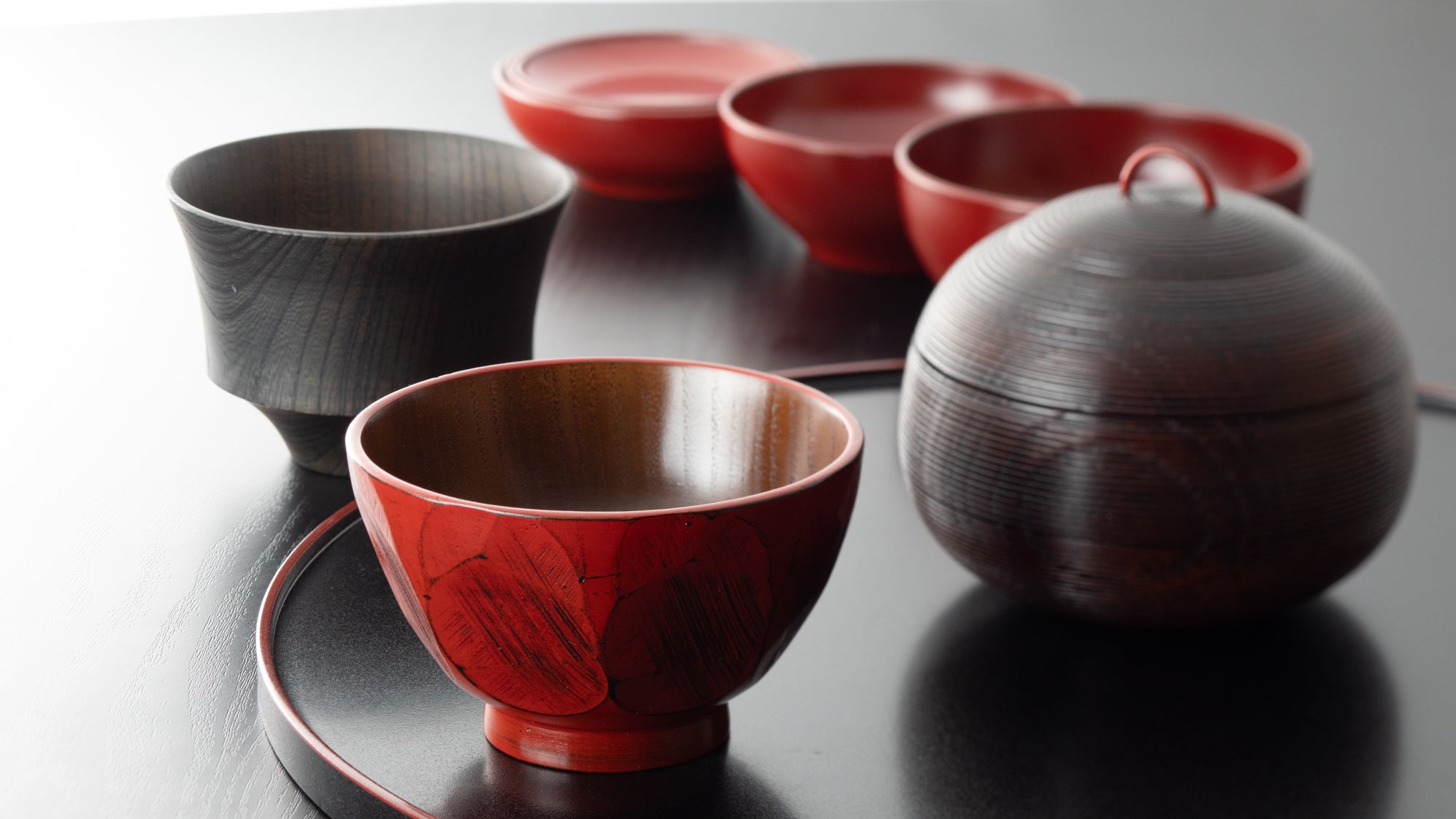
How to Care
Choose options






















Estimated Shipping Widget will be displayed here!
Jubako Bento Boxes
Jubako bento boxes make cuisine instantly look more elegant. Just pack the box to instantly elevate any meal. As a delightful hosting bonus, they also create a sense of excitement when the lid is opened. Here we introduce you to some special jubako boxes that are stylish and will change the atmosphere of your dining table into a gorgeous one.
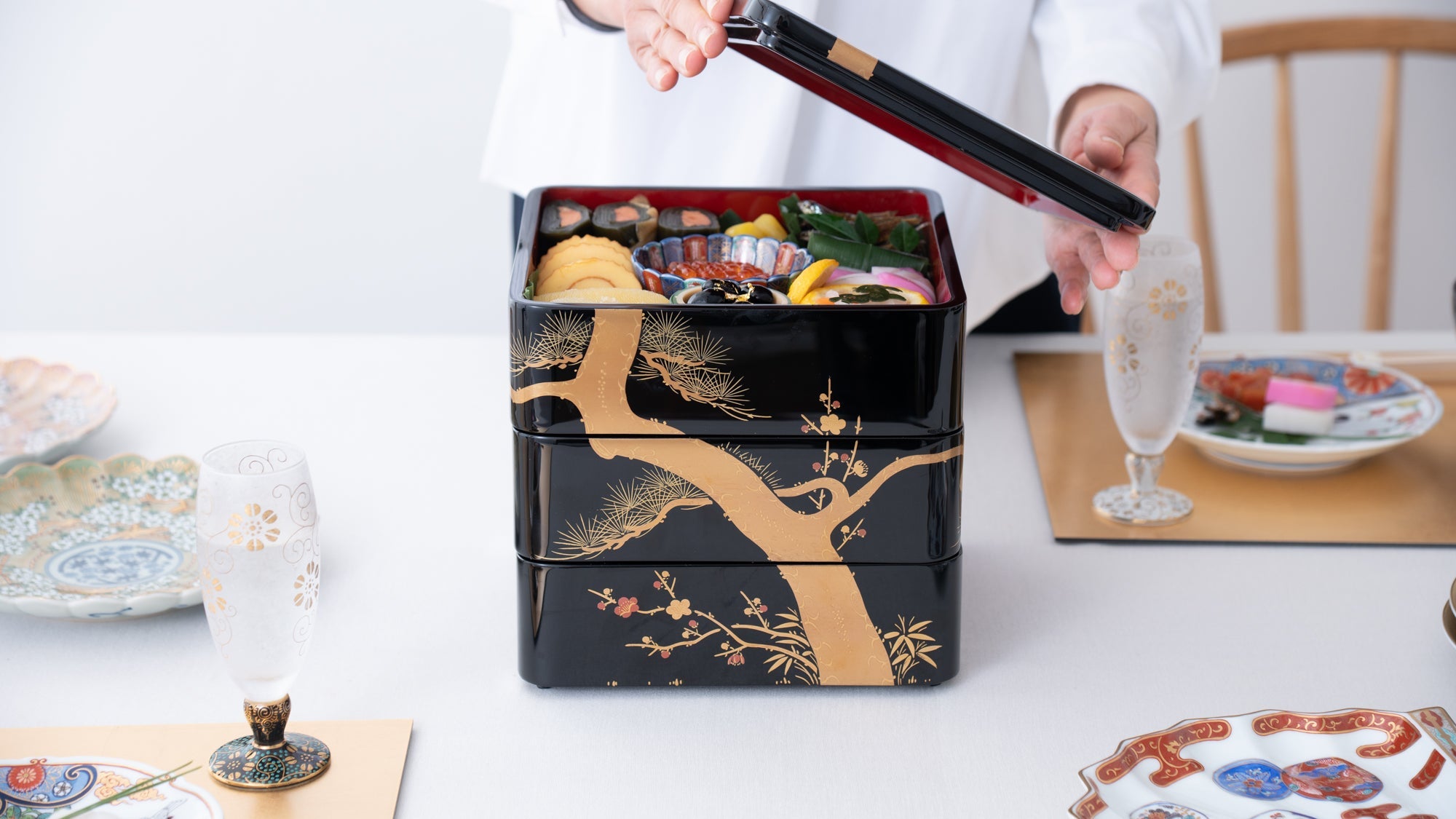
Lacquerware
Japanese lacquerware, also called shikki in Japanese, is a proud handicraft with a long history dating back to 5,000 BCE, and traditional methods are still followed today. Durable, light, antibacterial, and robust enough to endure for more than one hundred years, Japanese lacquerware is not only beautiful, but also highly functional.
In addition to the fine Japanese lacquerware found in antique and vintage pieces, there is also contemporary Japanese lacquerware suitable for modern life made by artisans who continue to improve their skills and pass on tradition today.
